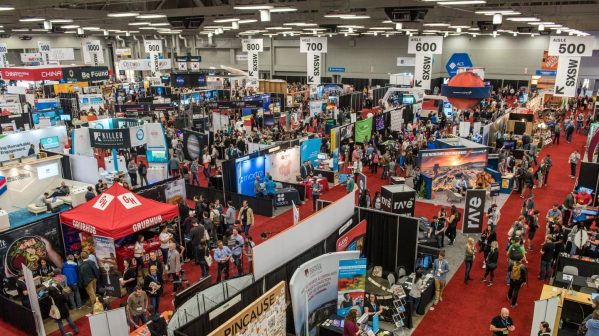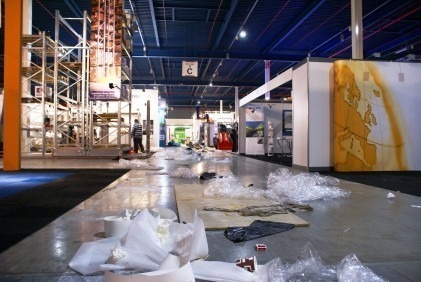The new exhibition trend.
Every year, ten-thousands of conferences and tradeshows take place around the world. Together, these 31,000 exhibitions attract more than 4.4 million companies who showcase their products and services to 260 million visitors.

An overwhelming majority of these fairs (80%) are business-to-business events that last between two to three days. A typical business-to-business fair takes three to four days of preparation and one to two days to disassemble. In other words, the process of building up and taking down a business-to-business trade show is double that of the fair’s actual duration.
The budget spent on the infrastructure for these trade shows – mostly stands – is estimated at €60 billion, or an average of €2 million per fair.
Compared to trade shows, the world of business-to-consumer festivals and events is a thrifty one. Roughly 200,000 outdoor events are organised globally every year for a total budget of €20 billion. That means that €30,000 is spent on outdoor infrastructure per event.
What explains this dizzying, million-euro difference in budget? Organisers of outdoor festivals and events want to create memories and visibility for a company, and they are mostly business-to-consumer. For the tradeshow industry, the end game is to close business deals and that’s worth spending some money.
The illusion of permanence.
Every trade show exhibitor wants to stand out and impress prospective and current clients with a unique, eye-catching structure. At the same time, almost every exhibitor wants to create an atmosphere that feels anything but ephemeral. They want a stand that offers the illusion of permanence and gives visitors the impression that they’re standing in a real store.
But this emphasis on permanence doesn’t come cheap. Hundreds of people are needed to construct the trade show stands. To create a seemingly permanent display, the workers must plaster and paint over dozens of wooden panels and use coverings to hide the stands’ framework. This is the number-one reason that exhibition stands have such a lengthy installation time and steep cost.
This high price tag also means that stand builders are under pressure to keep labour costs as low as possible. Many of them for instance hire busloads of foreign workers, often from eastern European counties, and bring them to Belgium to construct and disassemble the stands. As soon as the job is done, these workers are shuttled back to their home countries.
Sustainable is the new black.

The mountain of waste that these 31,000 fairs generate, however, is perhaps what’s most disturbing. Because it’s easier to throw all the used materials away than to stock and re-use them. Tonnes of wooden panels, walls, furniture and decorative elements are discarded with every fair. Re-use is moreover not sexy because used materials don’t produce the new and permanent feeling exhibitors are looking for.
With their robust, modular aluminium stands, companies like Octanorm, BeMatrix and Aluvision are thankfully starting to put a dent in the amount of waste produced by tradeshows.
But when it comes to the large eye-catching structures seen at most tradeshows, there is still a long way to go. The emphasis on permanent-looking structures at temporary events remains the norm.
But why? Why hide a stand’s structural elements and cover it with panels, plaster and paint? Why give visitors the impression that the structure around them is a permanent one when a mere step outside the exhibition booth immediately shatters that illusion and brings them back to the here and now of the fair? Isn’t this a bit absurd?
We are moving in precisely the opposite direction in other areas of life. In digital marketing for instance consumers are thirsting for more authentic messages. Tired of scripted, slick advertisements, they want more spontaneous videos, without make-up and filters.
Something similar is happening in interior design. More and more, we are going back to incandescent light bulbs, to coloured electrical wires and to rougher designs in our homes. Things that once used to be hidden are now seen as integral elements of our decoration that deserve to be seen.
The world of exhibition stands is moving in a similar direction. Forward-thinking exhibitors today want rougher-looking temporary designs that are fully re-usable because sustainable authenticity is the new black. More and more, they are embracing authentic-looking stands and more genuine business-to-business exchanges.
Companies want to communicate what they stand for openly and transparently, and half-open stands with rougher designs go hand in glove with this trend. Instead of trying to disguise a structure’s temporary aspect, exhibitors are making it a central part of the design and refusing to hide its structural elements. What you see is what you get.